#national parliament building
Explore tagged Tumblr posts
Text

Travel and Explore BD is one of the best tour operator in Bangladesh. We are dedicated to making travel easy, stress-free, and memorable for our clients. Discover two of the most beautiful buildings in Bangladesh that won the Aga Khan Prize for Architecture: the National Assembly building and the Bait-ur-Rouf mosque.
The National parliament building was built by the famous Louis Kahn and is one of the largest legislative complexes in the world. During our visit to and around the National Assembly building, including the crescent lake and the MP inn, you are invited to have lunch in the VIP cafeteria of the Bangladesh parliament building before heading out towards the Bait-ur-Rouf mosque.
#national parliament house#national parliament building tour#national parliament building#national assembly tour#visiting the parliament building#bangladesh parliament building
0 notes
Text
Rooftop ◈ Reichstag ◈ Berlin ࿐ྀུ ❀ꦿ֗

#Reichstag Building#National Assembly#German#Flag#Parliament#Bundestag#Reichstag Dome#Reichstag#Rooftop#Restaurant#Bar#Cafe#Terrace#Architecture#Cloudy Sky#Republic Square#Tiergarten#Skyline#Berlin#Germany
118 notes
·
View notes
Text

Three Vintage Style Postage Stamps - Greetings From Kuwait - Landmark Parliament Building
(download high resolution vector illustration at the shutterstock link above)
#arab#arabian#architecture#building#card#cardboard#city#craitza#day#design#east#greeting#gulf#kuwait#landmark#mail#middle#national#paper#parliament#philately#postage#postal#recycled#retro#silhouette#skyline#skyscraper#stamps#art
2 notes
·
View notes
Text

South Korean President Yoon Suk Yeol's attempt to impose martial law collapsed after 190 Members of Parliament barricaded themselves into the National Assembly chamber and voted to end martial law while the military tried to break in to stop them before they could vote. Many members had to climb a fence at the back of the building to break in to get a majority of the 300 member body in the room to vote.
#politics#news#world events#south korea#South Korean martial law#and you do owe liberalism that apology
12K notes
·
View notes
Text
Exploring Kuching Malaysia
Darul Hana Bridge and Sarawak Parliament Building Kuching is one of the most exotic and beautiful places I’ve visited in my travels. The tropical weather requires considerable adjustment for those unaccustomed to heat and humidity, and a daily swim in the lap pool helps! Kuching Apt Lap Pool Daytrips I’ve been exploring the surrounding areas but have had difficulty booking daytrips. There aren’t…

View On WordPress
#African National Congress (ANC)#Borneo Longhouses#Cape Town South Africa#Cape Whale Coast#Darul Hana Bridge Kuching#Democratic Alliance (DA)#East and West Malaysia#East Versus Peninsular Malaysia#Gabugan Parti Sarawak (GPS)#India Floating Mosque Kuching Waterfront#Irrawaddy (Snubfin) Dolphin#James Brooke Bistro Café Kuching#James Brooke Rajah of Sarawak#Kalimantan Indonesia#Malaysia Administrative Capital Putrajaya#Malaysian Federation#Malaysian State of Sarawak#Penang Malaysia#Peninsular Malaysia#Rainforest World Music Festival#Santubong River#Sarawak Cultural Village#Sarawak Parliament Building#Sarawak River Kuching#Sarawak Semenggoh Wildlife Centre#Sir James Brooke English Adventurer and Military Officer of the East India Company#South China Sea#State of Sabah#State of Sarawak#Sultanate of Brunei
1 note
·
View note
Text

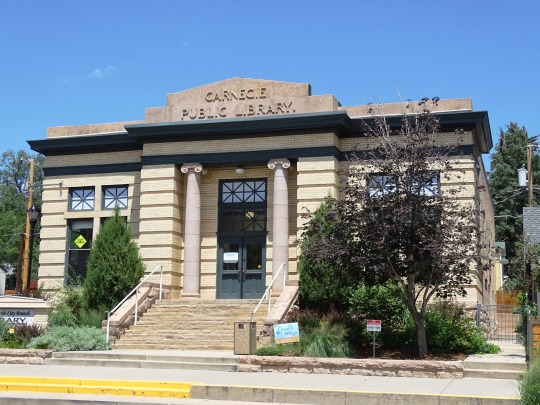



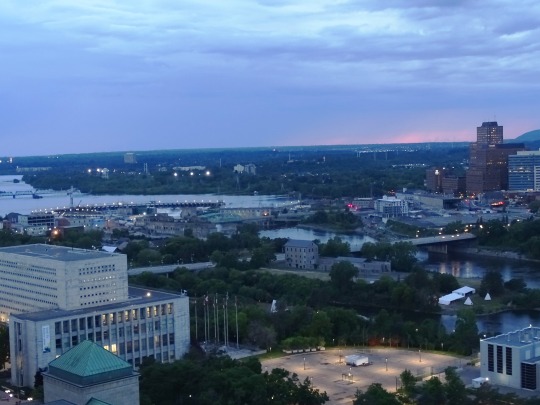

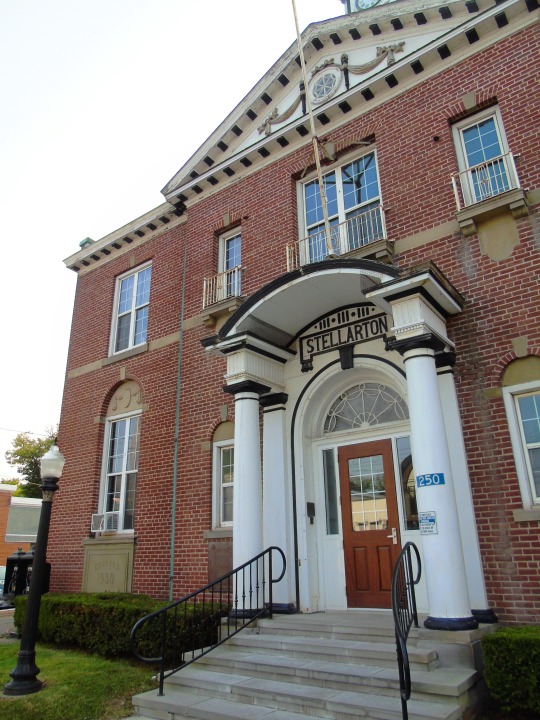
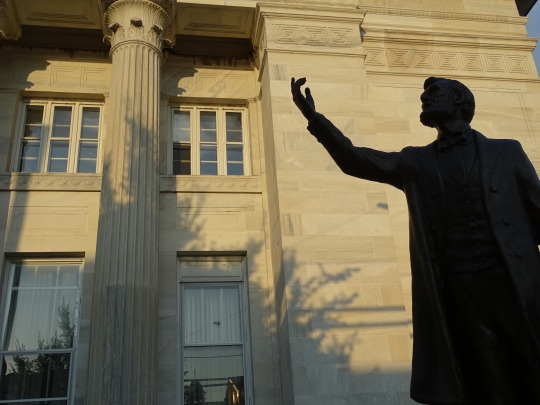




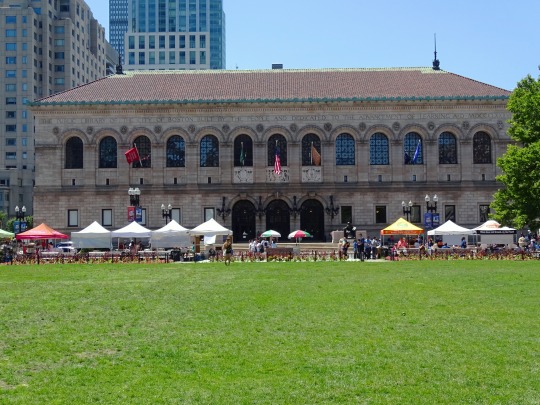





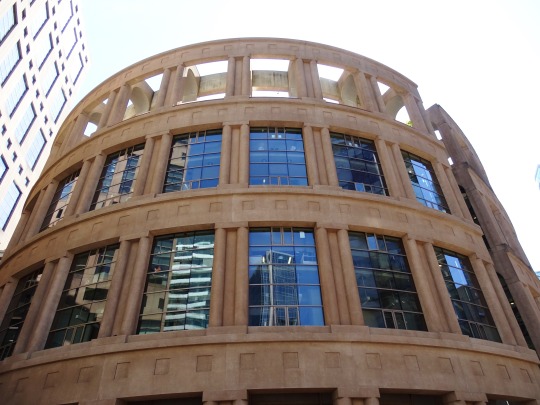

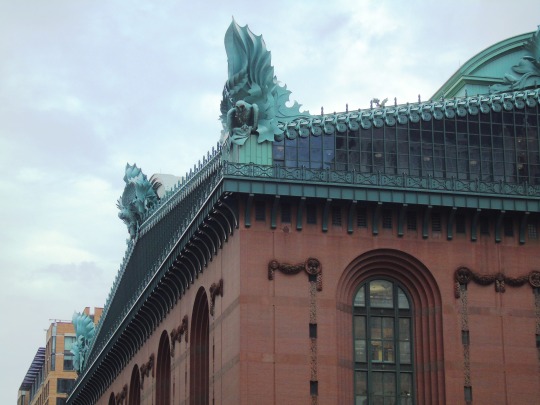

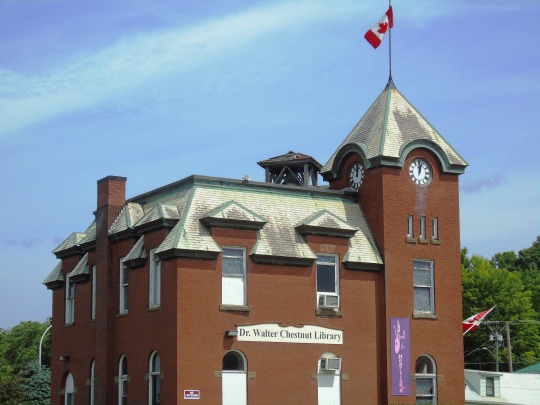

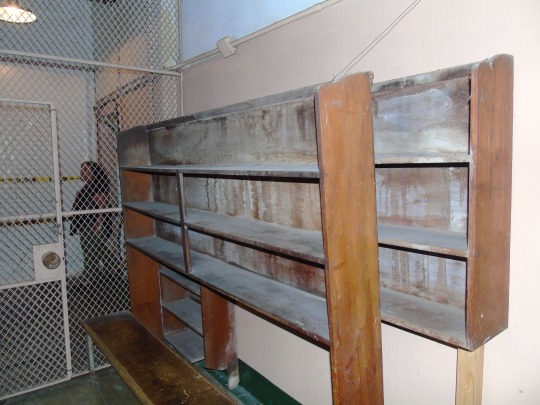


National Library Day
National Library Day is celebrated every year on 6 April. On this day, people come together to celebrate the crucial roles that libraries and librarians play in our society. It’s also the day to reflect on the importance of reading and how essential it is to make books accessible and affordable for every reader. A well-stocked library can introduce readers to many new worlds, and helps them become more informed citizens. Libraries are also great community spaces where people can gather to exchange ideas and learn together.
History of National Library Day
Libraries aren’t a new concept — it dates back millennia. The first systematically organized library was founded in the 7th century B.C. by Assyrian ruler Ashurbanipal in Nineveh, in contemporary Iraq. It contained approximately 30,000 cuneiform tablets sorted by subject.
Since their inception, almost every great civilization has built libraries. They became great repositories of knowledge, and a few ancient libraries live on even today. The goal of these libraries was to collect knowledge and distribute it for its use in everyday life. Special importance was given to books on agriculture, architecture, medicine, art, manufacturing, war, and topics concerning the betterment of life. As the years went by, people realized the benefits of having publicly accessible centers of knowledge, and libraries became an important feature in cities and towns across the world.
As the influence of the Internet grew, many believed that there would no longer be a need for libraries, but history has proved otherwise, as libraries continue to flourish and are now more popular than ever! Not everything can be found on the Internet, and a good amount of information is still available only on paper, and despite the convenience of the world wide web, people still like to physically visit a library and spend time among books and other readers.
National Library Day timeline
4th Century B.C.
Institutional Libraries
Libraries start to become an important part of educational institutions.
13th to 15th Century
Private Book Collections
The royals in Europe start to keep book collections for private use.
17th to 18th Century
National Libraries
Libraries in free countries of the world become government properties.
19th Century
Community Libraries
Community libraries are founded at public expense.
National Library Day FAQs
Is April National Library Month?
Yes, April is National School Library Month.
Why do we celebrate National Library Week?
National Library Week is an annual celebration highlighting the valuable role libraries, librarians, and library workers play in transforming lives and strengthening our communities.
What is a national library?
A national library is a library specifically established by the government of a country to serve as the preeminent repository of information for that country.
National Library Day Activities
Get a library membership: Celebrate National Library Day by getting a membership at your local library. Also encourage your friends, family, colleagues, and children to get their own memberships.
Donate books: You can also celebrate National Library Day by donating books to your local libraries. You can donate new books, give away old copies, or even purchase ebooks on behalf of your local libraries.
Thank a librarian: A library is nothing without its librarians. They keep stock of the books, help readers find the resources they need, and of course, always greet us with warm smiles. Remember to thank a librarian for everything that they do on National Library Day.
5 Interesting Facts About Libraries
Benjamin Franklin started a lending library: It was also one of the oldest libraries in America.
Andrew Carnegie was a great patron: He helped open 2,509 libraries across the world and 1,679 libraries in America.
Library fines add up to extraordinary amounts: In 2016, the San Jose Public Library reported $6.8 million in late fees.
Libraries also offer free music: They do so by having access to music streaming platforms.
They are big employers too: There are approximately 1,85,000 librarians in America.
Why We Love National Library Day
It keeps libraries thriving: Celebrations such as National Library Day ensure that our libraries continue to thrive despite the influence of the internet. These celebrations also bring thousands of new patrons to libraries every year.
For the love of reading: Anyone who loves reading also loves National Library Day. It’s the best way to ensure that everyone has access to good books and that future generations continue to buy and read books.
It builds communities: Libraries are also an important part of our community. People of all ages can visit their local library to read, work, find resources, and spend time with like-minded readers. National Library Day helps keep our communities alive.
Source
#Vancouver Public Library's Central Branch#Moshe Safdie#travel#original photography#vacation#tourist attraction#landmark#cityscape#architecture#New York Public Library#Stephen A. Schwarzman Building#Boston Public Library McKim Building#Adams County Library System#Gettysburg#Carrère and Hastings#National Library Day#NationalLibraryDay#6 April#USA#Canada#Old Colorado City Branch Carnegie Library#Van Wert#Ottawa#Library of Parliament#Chicago#Toronto#Stellarton#Hartland#Texas State Capitol#Philadelphia
0 notes
Text
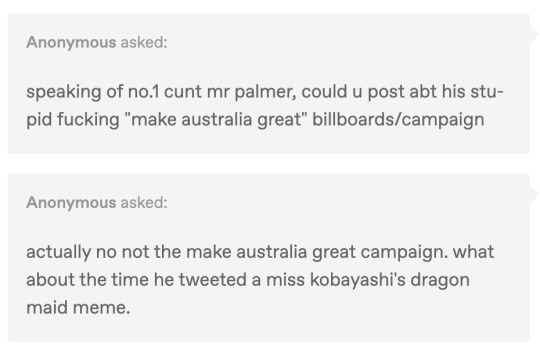

So a bit of background first for our international followers: Clive Palmer is one of Australia's many mining billionaires who like to meddle in our country's politics, and as such he is utterly despised by all of Australia.
Picture for context:

He is most commonly known online by the title "Fatty McFuckhead", (problematic as it may be) because he tried to sue a youtuber for $500,000 for calling him that - and he lost. So the name stuck.

Up until his most recent foray into parliament, the legally certified Fuckhead was best known for his batshit business ventures, such as attempting to build "The Titanic 2" (failed) and trying to build a dinosaur theme park (also failed, but at least nobody got eaten by a T-Rex in this one).
For a very long time Clive played the role of sugar daddy to Australia's largest conservative party, the ironically named Liberal Party, until they had a falling out in 2012 after Clive claimed there was too much money influencing politics (lol), at which point he started his own party, days after saying he totally quit and wasn't fired and he only left because he didn't want to be a distraction.
His initial run at parliament was actually kinda successful, with Palmer's group winning 4 seats, plus a member from the "Motoring Enthusiasts Party" joined them too after accidentally getting elected and not knowing what the fuck to do.
Despite this initial success however, Palmer's party (which ran on basically no platform other than "I'm rich") hit an iceberg (titanic 2 achieved) and seven elected state and federal politicians quit within the first year.
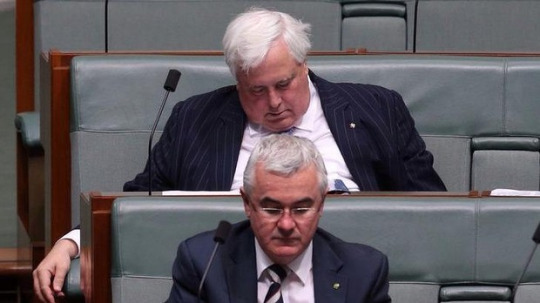
By the time the next federal election rolled around, only one Palmer party candidate was still running for re-election. The most successful of this group - Jaquie Lambie - quit to sit as an independant and is still in parliament today.
Here she is with a painting of herself strangling Clive (she sells signed copies of this)

And here the senator is posting about liking sausage:

Anyway, we're getting to the point: which is the yellow posters. By the 2016 election, just two years after forming, the party was in complete freefall. It won just 0.01% of the vote at their second election, and it was announced shortly after that Clive was quitting politics and the party was being shut down. Australia breathed a sigh of relief.
It was, of course, short lived.
Clive, in desperate need of attention, restarted the party for the 2019 election, fielding candidates in every seat and spending $60 million in advertising in an attempt to win votes.
Every single candidate lost.
It was in this campaign however that Australia really started to fall out of love with Palmer, because most of that $60 million went towards putting up the world's least compelling marketing billboards on almost every single free space in the country.
For a good six months this was basically the only thing you would see in Australia if you went outside:
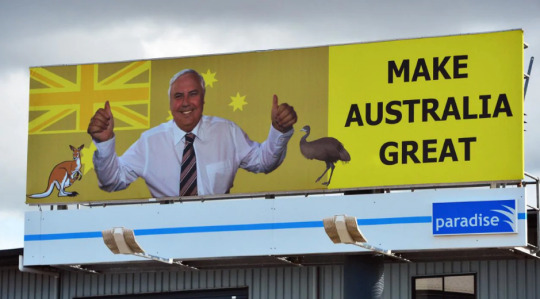
Clearly Graphic design is his passion. And yes, the genius did just straight up try and copy Trump's homework while changing a few words, hoping nobody would notice.
Very quickly these all got vandalised and it seemed the ad companies didn't care enough to replace them.



We could go on posting examples, there are thousands, but the best is definitely the one Ikea put up shortly after Clive lost the election:

In 2022, Clive's party contested the election AGAIN, this time also opting to send millions on spam text messages to every person in Australia begging for people to vote for him, as well as buying almost every youtube ad for a year, at the cost of $100 million.
He won a whopping one seat.
During this election Clive ran on an anti-lockdown, anti-vax platform with the slogan "freedom, freedom, freedom". That message, however, was slightly undermined when his goons, dressed in 'Freedom!' shirts, made national news for trying to beat up a protester who turned up at a rally dressed as an annoying text message, shouting "pay your workers" at Clive.

As if that wasn't bad enough, at another rally Clive knocked himself unconscious while trying to jump up on stage, and then a few weeks later was rushed to hospital with covid, while his anti-vax ads were still in regular rotation on TV, at which point it was also leaked to the press that Palmer had been alledgedly trying to buy Hitler's car.
Utterly humiliated, the party deregistered again shortly after the election.
Can't wait until he runs again in 2025.
Anyway, on the other "Clive tweeting Miss Kobayashi's Dragon" thing, we have no idea what that means but here's a screencap:
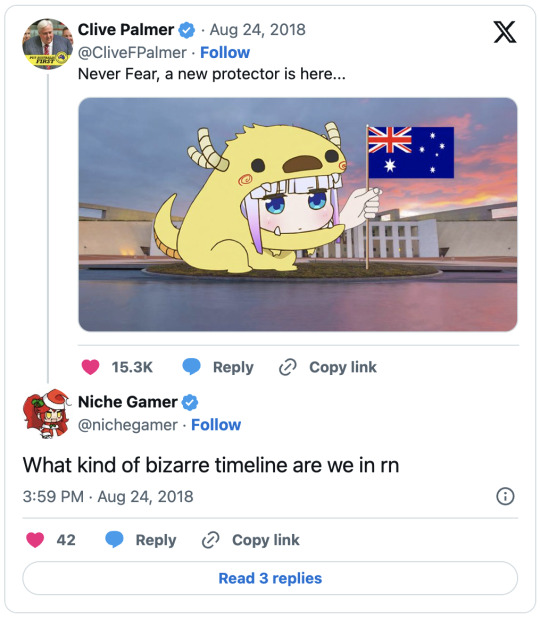
5K notes
·
View notes
Link
#new parliament building#mallikarjunkharge#indian national congress#narendra modi#congress#draupadi murmu#ram nath kovid
0 notes
Text



Austrian Parliament Building, Dr. Karl Renner-Ring 3, 1017 Wien Österreichisches Parlamentsgebäude Здание австрийского парламента Bâtiment du Parlement autrichien ────────────────────── Glass dome: Transparency as a symbol For the first time, the new glass dome above the National Council Chamber allows a view of the sky and the quadriga on the roof. The light transmission can be controlled by the electrochromic – i. e. tintable – glass panels. The glass dome replaces the two glass ceilings that had previously covered the hall.
#Austrian Parliament Building#Austria#Parliament#building#Vienna#Theophil Hansen#1884#glass dome#National Council Chamber#roof#Dach#electrochromic#glass panels#Glasdach#Nationalratssitzungssaal#Parlamentsgebäude#Österreich#Wien#Parlament#здание#Парламент#Австрия#bâtiment#parlement#autrichien#Autriche#Vienne#Вена#Innere Stadt#Vídeň
1 note
·
View note
Text

#philately#postage stamp#ephemera#vintage stamps#stamp collecting#japan stamps#japan#national diet building japan#japanese parliament building#architecture
0 notes
Text
Clearly, y'all don't care about Jews, and the fact that Hamas is violently antisemitic doesn't seem matter to any of you. So let me go with a new approach, of equal truth and value. Hamas is violently anti-Palestinian.
This past week, Hamas attacked evacuation routes and prevented Gazan citizens from fleeing an active warzone. [1]
They did that because they routinely use Gazan civilians as human shields. Hamas intentionally builds military targets close to schools, hospitals, and mosques, putting soft targets in the way of both incoming and outgoing fire. Hamas encourages Gazan civilians and children to stand on the roofs of buildings they know the IDF is targeting. [2]
Hamas has refused to allow elections in Gaza since 2006. Not just Palestinian National Authority elections, mind you. No open elections for any office have been held in seventeen years. Palestinian rights to free elections and self-determination have been denied by Hamas. [3] (And good luck to anyone who tries to blame that on Israel, because elections were held by the PNA in the West Bank in 2012, 2017, 2021 and 2022. It's Hamas's intention alone to purge democracy.)
Hamas's track record on human rights is appalling. Palestinian prisoners in Gaza face unfair trials and death sentences after being tortured by police. Palestinian women are prevented from accessing the legal systems to escape domestic abuse situations. Political dissidents in Hamas, even ones who merely support the other half of the Palestinian government, have been summarily executed. [4] [5]
Peaceful organizers in Palestine protested Hamas's massive tax hikes in 2019. Hamas security forces responded by assaulting demonstrators, tracking them down, raiding their homes, and detaining them. And, as previously mentioned, prisoners in Gaza are not treated well by Hamas. [6]
Edit Nov.5, 10:30 PM: I forgot to add arguably the most important thing-- Hamas manipulates the humanitarian aid they receive away from helping Gazans and toward killing Jews. 5% of Hamas's budget actually gets used for humanitarian aid, while 55% goes to military use. Construction equipment intended to rebuild Gaza's crumbling infrastructure is used to build a complex series of underground tunnels. Those tunnels in turn are used to smuggle Iranian military equipment into the country. They were also used for human trafficking in the October 7th attacks. [7]
If you actually want Palestinians to be free, you can't just replace Israel with Hamas. But it's not like they're the only option for supporting Palestinian liberation. While Fatah doesn't have an immaculate historical track record, it now operates as a leftist, democratic socialist, secular Palestinian government that fights for a two-state solution. Similarly, Arab-Israeli political parties like the Hadash-Ta'al coalition support leftist, anti-Zionist, and two-state solutions from within the Israeli parliament.
You can and should support Palestinian liberation movements that abuse neither Jewish nor Arab human rights and dignities. Plenty of them exist out there. But if y'all continue to throw your weight behind an antisemitic and anti-democratic terrorist regime, Palestinians and Jews will both take note of exactly where you stand.
2K notes
·
View notes
Text
"The Congo’s strategic location in the middle of Africa and its fabulous natural endowment of minerals and other resources have since 1884 ensured that it would serve as a theatre for the playing out of the economic and strategic interests of outsiders: the colonial powers during the scramble for Africa; the superpowers during the Cold War; and neighbouring African states in the post-Cold War era. To prevent a direct confrontation between the United States and the Soviet Union, the Security Council deployed from 1960 to 1964 what was then the largest and most ambitious operation ever undertaken by the UN, with nearly 20,000 troops at its peak strength plus a large contingent of civilian personnel for nation-building tasks.
This latter aspect of the Opération des Nations unies au Congo (ONUC) was a function of the fragile political revolution ... The Congo won its independence from Belgium on 30 June 1960. Patrice Lumumba’s MNC-L and its coalition of radical nationalist parties had captured a majority of seats in the lower house of parliament in the pre-independence elections in May. Lumumba became prime minister and head of government, while the Abako leader Joseph Kasa-Vubu became the ceremonial head of state. The victory of a militantly nationalist leader with a strong national constituency was viewed as a major impediment to the Belgian neocolonialist strategy and a threat to the global interests of the Western alliance.
Within two weeks of the proclamation of independence, Prime Minister Lumumba was faced with both a nationwide mutiny by the army and a secessionist movement in the province of Katanga bankrolled by Western mining interests. Both revolts were instigated by the Belgians, who also intervened militarily on 10 July, a day before the Katanga secession was announced. In the hopes of obtaining the evacuation of Belgian troops and white mercenaries, and thus ending the Katanga secession, Lumumba made a successful appeal to the UN Security Council to send a UN peacekeeping force to the Congo. However, the UN secretary-general, Dag Hammarskjöld, interpreted the UN mandate in accordance with Western neocolonialist interests and the US Cold War imperative of preventing Soviet expansion in the Third World. This led to a bitter dispute between Lumumba and Hammarskjöld, which resulted in the US- and Belgian-led initiative to assassinate the first and democratically elected prime minister of the Congo.
... Brussels’ failure to prevent a radical nationalist such as Lumumba from becoming prime minister created a crisis for the imperialist countries, which were determined to have a decolonization favourable to their economic and strategic interests with the help of more conservative African leaders. With Belgium’s failure to transfer power in an orderly fashion to a well-groomed moderate leadership group that could be expected to advance Western interests in Central and Southern Africa, the crisis of decolonization in the Congo required US and UN interventions. Working hand in hand, Washington, New York and Brussels succeeded in eliminating Lumumba and his radical followers from the political scene."
Georges Nzongola-Ntalaja, The Congo from Leopold to Kabila: A People's History, 2002
425 notes
·
View notes
Text
Reichstag ◈ Tiergarten ◈ Berlin ◈ Germany ࿐ྀུ ❀ꦿ֗

#Reichstag Building#National Assembly#European Union#Flag#German#Parliament#Bundestag#Cloudy Sky#Reichstag#Renaissance#Revival#Architecture#Cityscape#Walkway#Street Scene#Platz der Republik#Republic Square#Tiergarten#Berlin#Germany
102 notes
·
View notes
Text
It was built between 1884 and 1902, following the plans of Imre Steindl, who went blind a few months before the inauguration. It is the largest building in the country, the scene of meetings of the National Assembly of Hungary and the second largest parliament in the world behind that of Romania. It is neo-Gothic in style, although with some peculiarities.
444 notes
·
View notes
Photo

How Did Hitler Rise to Power?
The rise of Adolf Hitler (1889-1945), the Nazi dictator of Germany from 1933, was enabled by those already in power eager to take advantage of his popularity. Hitler promised to make Germany great again after the humiliation of WWI by restoring Germany's lost territories, returning to traditional German values, achieving full employment, and destroying 'enemies' like Communists and Jewish people.
Hitler's rise to power was a surprisingly long process, involving many steps and several significant setbacks such as his imprisonment following the failed coup known as the Beer Hall Putsch in November 1923. Hitler's rise to power effectively took a decade, with the Nazi Party gaining just 12 seats in elections for the German Reichstag (Parliament) in 1928 (from a total of 491 in that election), 107 in 1930, 230 in July 1932, 196 in November 1932, and 288 seats in 1933. Once securely in power as chancellor, in 1933, Hitler quickly eliminated all opposition and established a totalitarian regime with himself as undisputed dictator, Germany's Führer.
Adolf Hitler in SA Uniform
Imperial War Museums (CC BY-NC-SA)
Adolf Hitler and the Nazi Party rose to power for the following reasons:
The harsh terms of the Treaty of Versailles riled many Germans, especially the guilt clause for starting WWI, and traditional political parties were tarnished by association with the signing of the treaty. Hitler promised to overturn the treaty and restore German pride.
The fallout of the Great Depression led to mass unemployment and hyperinflation leading voters to turn to more extreme political parties.
The weakness and ineptitude of successive Weimar Republic coalition governments.
Hitler promised full employment through such programmes as road building and rearmament.
In return for their support, Hitler promised business leaders lucrative state contracts such as arms manufacturing. This idea was also popular with the German Army.
Hitler appealed to traditional German beliefs like the greatness of the nation, strong family values, and a classless society.
Hitler promised an expansion of Germany to find new lands and Lebensraum ('living space') where the German people could prosper.
Hitler used propaganda to identify what the Nazis described as common enemies of the state, such as outsiders and Jewish people who, he claimed, were holding Germany back.
A cult of Hitler was created, which promoted the idea that he was the saviour of Germany.
The establishment thought that by inviting Hitler to power, they could better control the Nazi phenomenon and benefit from its popularity themselves.
Once made chancellor, Hitler used his power to eliminate rivals. He ensured the German parliament had little power and began to establish a dictatorship with himself as the undisputed head of a one-party police state.
Historians continue to debate the weight of each of the above points in accounting for Hitler's rise to power.
The Treaty of Versailles
The First World War (1914-18) was formally terminated by the Treaty of Versailles, which dictated the terms of the German surrender. Germany lost a significant part of its territory, was obliged to pay reparations, and had to accept full responsibility for starting the conflict. The German people protested at these terms in 1919, and those German politicians who had agreed to it were widely referred to as 'the criminals of 1919'. This resentment was fuelled by the myth that the German people had been let down in WWI by the high command of their army, which had 'stabbed them in the back', otherwise, they might have won the war, many thought. Consequently, there was a feeling that the political and military establishment of the new Germany, the Weimar Republic (1918-33), could not be fully trusted.
Europe after The Treaty of Versailles
Simeon Netchev (CC BY-NC-ND)
The fascist National Socialist German Workers' Party (NSDAP or Nazi Party for short) was founded in 1920. The party was neither socialist nor at all interested in workers, but Adolf Hitler had chosen the name to give his ultra-nationalist party as wide an appeal as possible. Hitler was able to exploit the anti-establishment feeling as the Nazis were complete outsiders. As early as 1925, in his book Mein Kampf, Hitler promised to abolish the terms of Versailles and create a new 'Greater Germany'.
Continue reading...
76 notes
·
View notes
Text
Tbilisi Georgia

View On WordPress
#Abanotubani Sulfur Baths#Air Serbia#Anchiskhati Basilica#Baratashvili Bridge#Bridge of Peace Tbilisi#Caucasus Mountain Range#Freedom Square#Georgia Parliament Building#Georgian Khinkali#Georgian National Gallery#Georgian National Museum#Hinkali Factory Tbilisi#King Gorgasali#King Gorgasali’s Son Dachi#Liberty Square aka Freedom Square#Metekhi Bridge#Metekhi Church of the Nativity of the Virgin Mary#MOMA Tbilisi#Mt. Mtatsminda#Mtkvari River#Narikala Fortress#National Botanical Garden Tbilisi#Niko Pirosmanashvili Georgian Artist#Open-Air Museum of Ethnography Tbilisi#Orbeliani Square#Project ArtBeat Contemporary Art Space Tbilisi#Sioni Cathedral#Tbilisi Botanical Gardens#Tbilisi Funicular#Tbilisi Georgia
0 notes